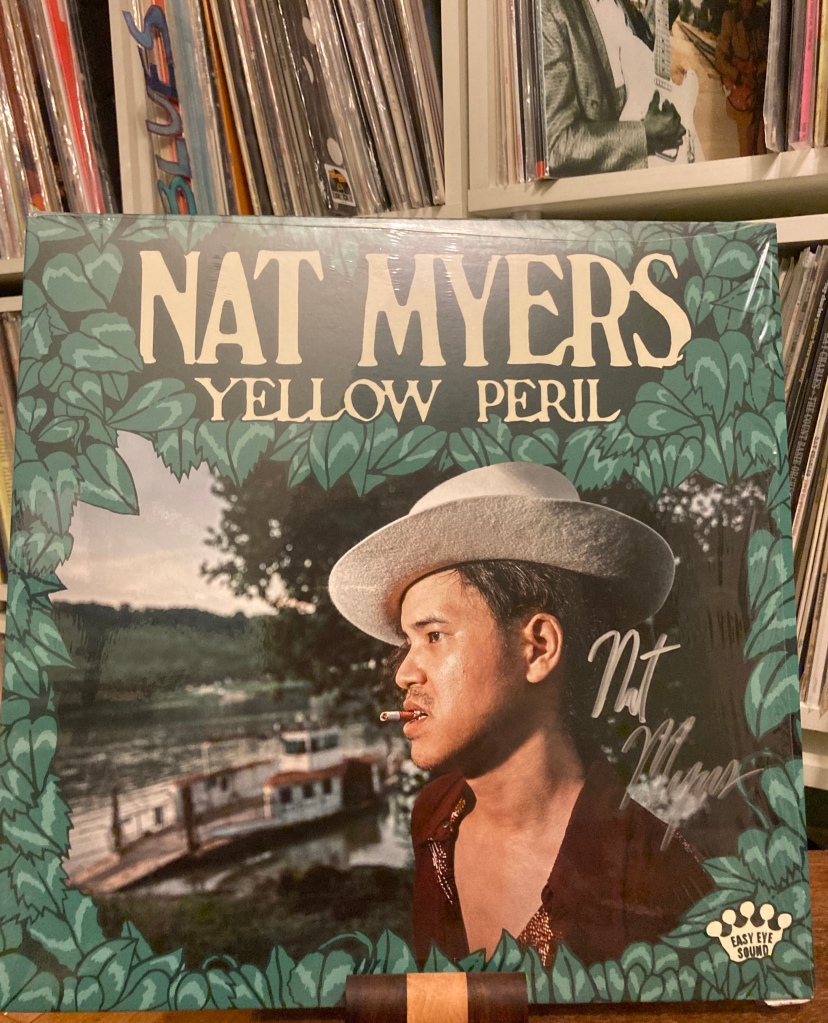
Being a blues fan in the 21st century can feel a bit like being a historical archivist. So many of the “new” blues albums I have added to my collection in the last year have really been reissues of recordings that were cut in the last century by legends who died decades before I was born. There is new blues material of course, but a lot of it seems to be slick and R&B-adjacent or drenched in the electric excess of guitar-slinging roadhouse machismo. Some is excellent; some self-referential pastiche. Regardless, finding quality new blues material outside of these two molds can be challenging.
Enter Nat Myers, a Korean-American “blues poet” with a restless biography that reads like a Sleepy John Estes travelogue. I first learned of Myers in 2022 when he was the opening act for the Southern soul-rock band JJ Grey & Mofro. It was one of the rare instances where I enjoyed the opener as much as the headliner. In his solo set Myers kept the audience rocking with his resonator guitar, singing, and foot stomping. I was blown away by his thoughtful songwriting, superb fingerpicking, and weathered voice. All of these attributes are on display on Myers’ 2023 debut LP Yellow Peril. Throughout, he demonstrates mastery of a variety of pre-war blues idioms, which he reworks in a way that feels personal and fresh.
Perhaps the best example is the title track. As Myers acknowledges in the liner notes, the song’s melody and guitar part are heavily influenced by Charley Patton’s 1929 recording of Mississippi Boweavil Blues. Patton’s song describes the decimation of southern cotton crops by beetles. Myers cleverly inverts that theme to decry a different scourge—racial hatred. Myers wrote the song during the pandemic and a rise in anti-Asian hate. Myers says on his website, “I knew they were going to blame us yellow folks for the virus. I’d felt it already.” The song’s message comes through with urgency in the modern sounding choruses where Myers repeatedly sings “yellow peril, yellow peril, yellow peril, man.” The song is a powerful addition to the tragically-long lineage of blues songs about racism, which includes recordings like Leadbelly’s Bourgeois Blues, Nina Simone’s Backlash Blues, and Buffalo Nichols’ Another Man, among many others.
One of the pleasures of Yellow Peril as an album is in tracing back Myers’ influences. The sweet sounding melody and fingerpicking in Pray For Rain evoke Mississippi John Hurt’s Nobody’s Dirty Business. The ragtime-influenced Trixin’ and Misbehavin’ Mama continue the piedmont blues tradition exemplified by artists like Blind Boy Fuller. The ominous lyrics and chords of Undertaker Blues remind me a little of Skip James’ haunting Cypress Grove Blues. The ghosts of the blues greats are alive and well on Yellow Peril if you know where to look.
In that sense, Yellow Peril feels like a throwback to the blues and folk revival of the 1950s and 60s. It has a lot in common with albums by Greenwich Village musicians like Dave Van Ronk who basically were archivists reintroducing the public to ageless tunes from the dusty past. But it would be a disservice to portray Yellow Peril as a musicological exercise. For one thing, the album is too fun. Just listen to Ramble No More. It boasts a great riff and beat that shows how to rock with just an acoustic guitar. Perhaps most importantly, Myers is a songwriter who has nailed the alchemy of another folk music tradition—reworking timeless material to express a personal vision. One particularly interesting example is Roscoe. The lyrics tell the story of someone suspicious that their partner is trying to kill them. Myers sings, “Strychnine, turpentine Darling what you put in my food?” It’s a classic blues theme, which recalls Commit a Crime by Howlin’ Wolf and its immortal lyric, “you put poison in my coffee, instead of milk or cream.” Myers even lets loose a falsetto howl towards the end of the track that feels like it could be a subtle nod to the Wolf. But Myers’ acoustic guitar and melody are entirely different, influenced by the sounds of an era before Howlin’ Wolf. In any event, Myers’ synthesis and recreation of timeless source material makes me think of some of the earliest works by another Greenwich Village folk stalwart—Bob Dylan.
Other musicians appear on Yellow Peril in places. Dan Auerbach of Black Keys fame (and the owner of the Easy Eye label that released Yellow Peril) cowrote several of the songs and plays on a handful. Pat McLaughlin and Leroy Troy also contribute. Their collective additions include percussion, bass, guitar, banjo, and backup vocals. But Yellow Peril is a predominantly stripped down affair with Myers’ voice, guitar, and material front and center. They are strong enough for the record to earn Dog Hill Music’s inaugural album of the year superlative for 2023.
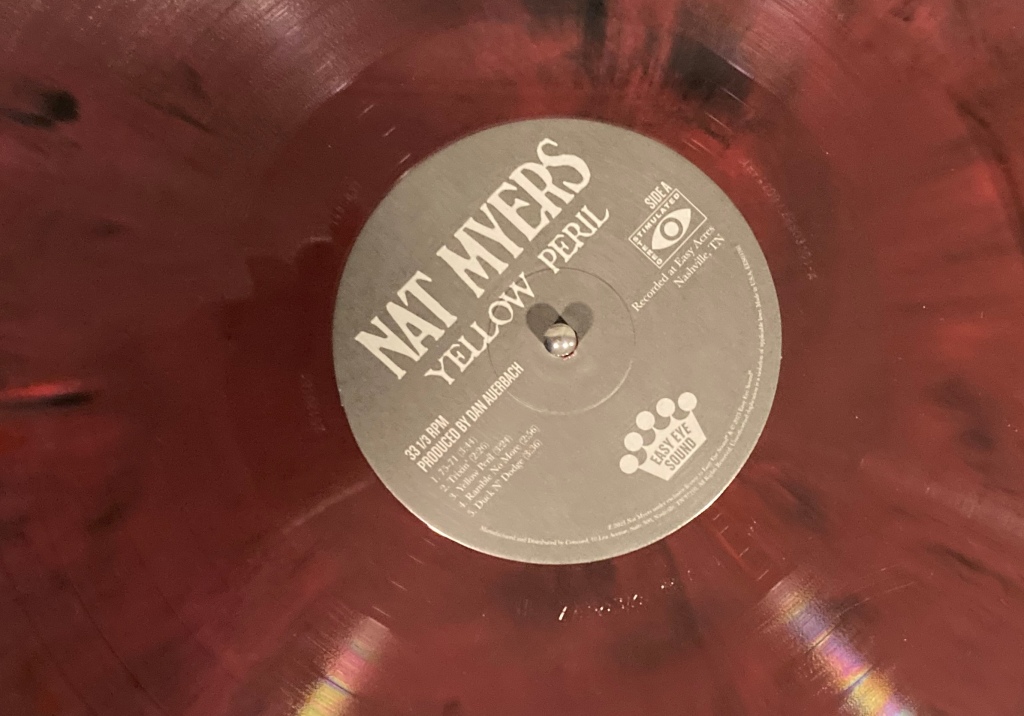
The Pressing/Sound: The album sounds like it was engineered to feel older than it is—a bit like a new photograph with a mild sepia filter added. It could be a byproduct of how it was recorded. According to Myers’ website, Yellow Peril was cut in a “makeshift studio at Auerbach’s home, a 100-year-old stone house on several acres in Nashville.” Yellow Peril certainly has some raw, “field” recording charm, although it still sounds like a new recording in terms of mixing, volume, and balance. It doesn’t have the large dynamic shifts in volume present on some classic blues recordings from makeshift studios (one example that comes to mind is the self-titled 1959 LP Lightnin’ Hopkins, Folkways Records FS 3822, recorded by Samuel B. Charters in Hopkins’ room in Houston with “Apex equipment” and an “Electrovoice 636 microphone.” ). To me, Yellow Peril sounds like a recording more than it sounds like really being in the room with the musicians, but it’s a good recording and the engineering is unobtrusive. Myers’ vocals and guitar are presented nicely throughout. Myers’ career should really be going places, so I couldn’t resist ordering an autographed copy of Yellow Peril. It came on moody looking maroon swirl vinyl. I was a bit apprehensive since colored vinyl can be noisy, but my copy sounds good. The vinyl is not silent, but it is quiet enough to not interfere with the acoustic instrumentation of Yellow Peril. Obviously I recommend the album highly, and I am happy with this pressing too.
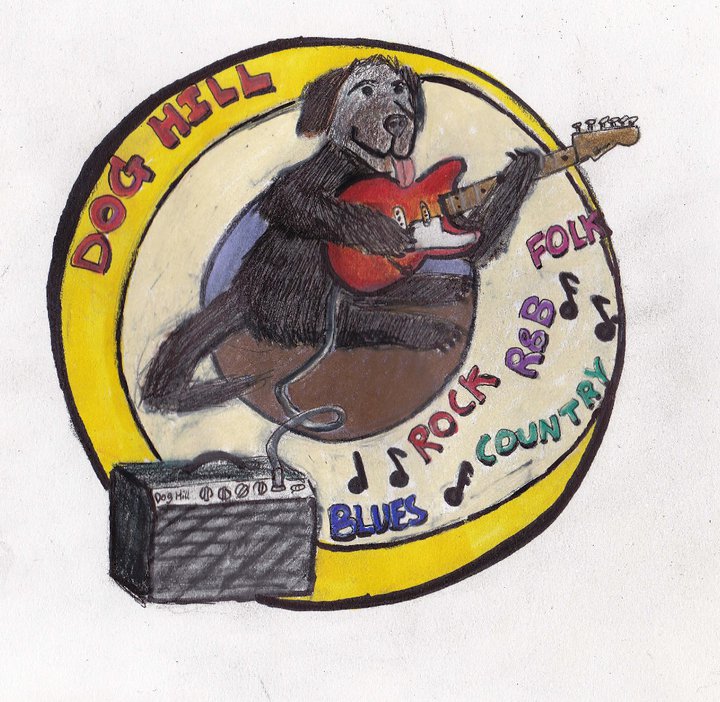
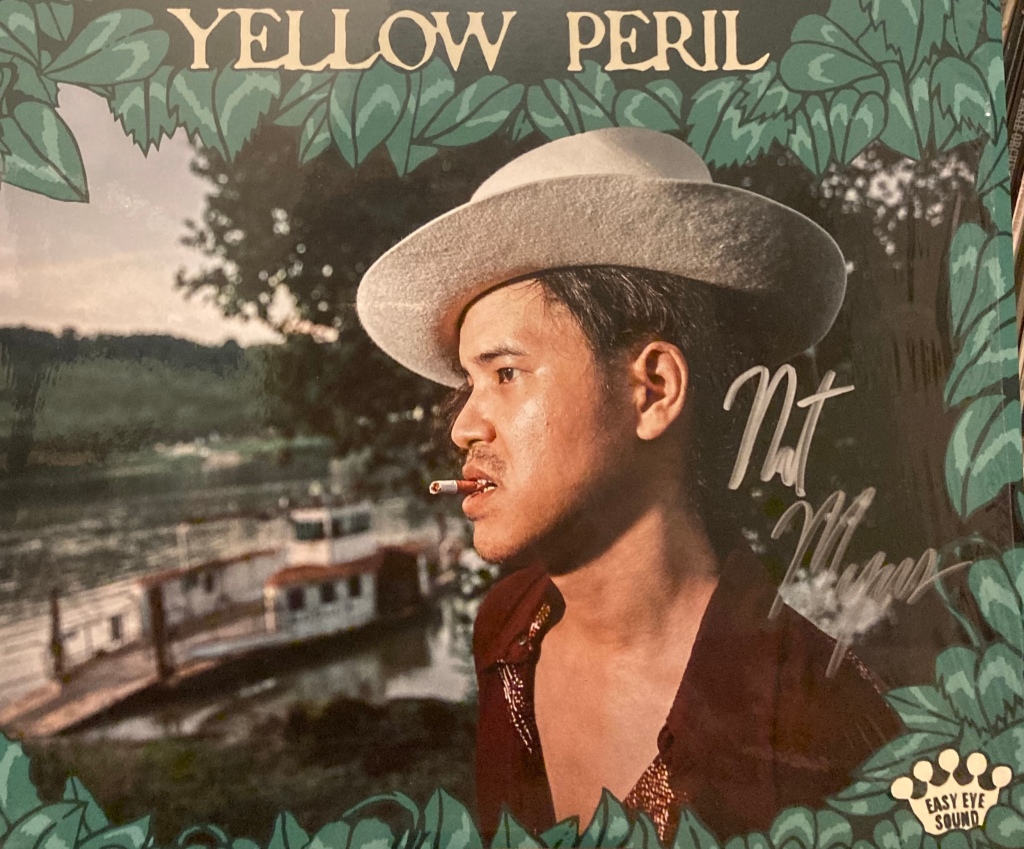
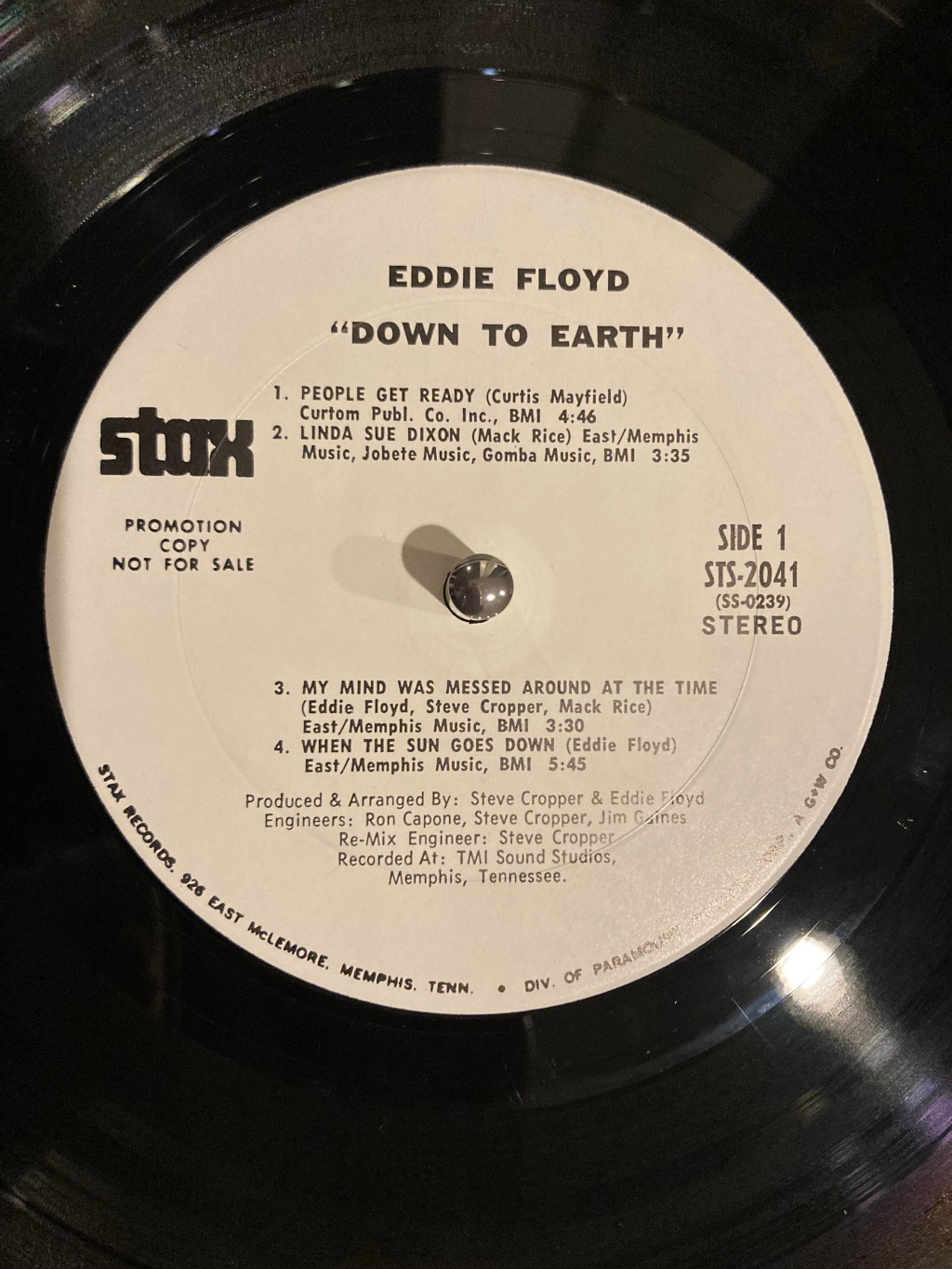

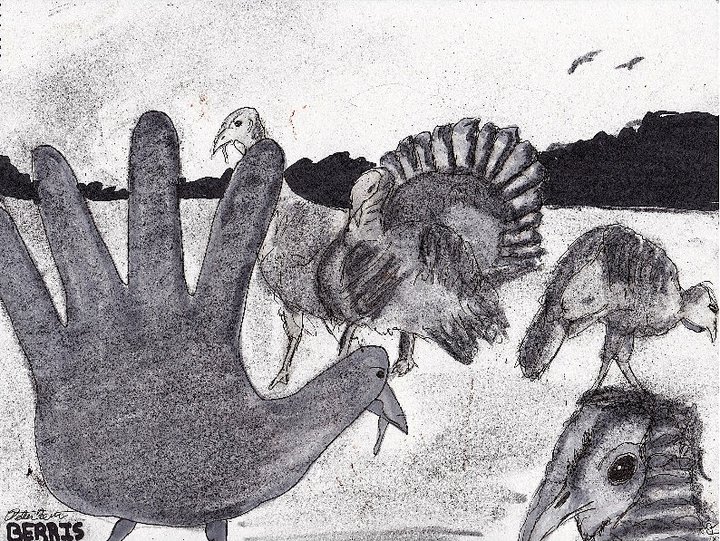
Leave a comment